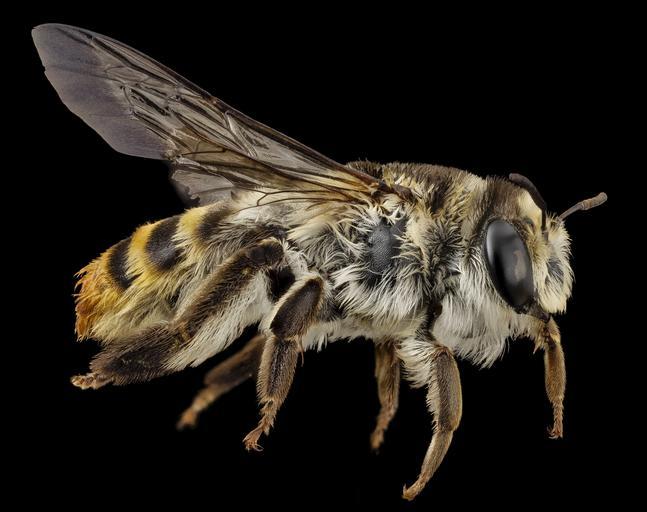MAKE A MEME
View Large Image

| View Original: | Stenotritus_pubescens,_f,_cleaned,_side,_peru_2014-07-26-15.20.25_ZS_PMax.jpg (4682x3704) | |||
| Download: | Original | Medium | Small | Thumb |
| Courtesy of: | www.flickr.com | More Like This | ||
| Keywords: stenotritidae stenotritus bee bees australia sand sandlover apidae apoidea anthophila laurence packer laurencepacker york university rare small fast flying desert droege biml usgs usgsbiml pollen stenotritus pubescens stenotrituspubescens black background animal outdoor photo border insect moth macro Experiment: This specimen has previously been photographed and uploaded to our account. www.flickr.com/photos/usgsbiml/14589580124/ and www.flickr.com/photos/usgsbiml/14404813170/ The difference is that I have cleaned the specimen by rehydrating it overnight floating on foam in a tupper ware container of water and then vigorously washing it in hot soapy water by dunking the specimen on the pin into another plastic container and shaking. The specimen was rinsed under the faucet, blotted on a paper towel and then dipped into Acetone to replace much of the water. At that point it was subjected to compressed air which quickly dried the hair. There is a slight bit of matting compared to the original, but you will notice the eyes are nicely saturated and dark now and the pollen and dust on the specimen is largely gone. Will be doing this with more specimens in the future. The comparisons are even more dramatic when you consider how much time I spent on the first pictures to photoshop out a lot of the major dust. ~~~~~~~~~~{{{{{{0}}}}}}~~~~~~~~~~ All photographs are public domain, feel free to download and use as you wish. Photography Information: Canon Mark II 5D, Zerene Stacker, Stackshot Sled, 65mm Canon MP-E 1-5X macro lens, Twin Macro Flash in Styrofoam Cooler, F5.0, ISO 100, Shutter Speed 200 The murmuring of bees has ceased; But murmuring of some Posterior, prophetic, Has simultaneous come,-- The lower metres of the year, When nature's laugh is done,-- The Revelations of the book Whose Genesis is June. -Emily Dickinson Want some Useful Links to the Techniques We Use? Well now here you go Citizen: Basic USGSBIML set up: www.youtube.com/watch?v=S-_yvIsucOY USGSBIML Photoshopping Technique: Note that we now have added using the burn tool at 50% opacity set to shadows to clean up the halos that bleed into the black background from "hot" color sections of the picture. www.youtube.com/watch?v=Bdmx_8zqvN4 PDF of Basic USGSBIML Photography Set Up: ftp://ftpext.usgs.gov/pub/er/md/laurel/Droege/How%20to%20Take%20MacroPhotographs%20of%20Insects%20BIML%20Lab2.pdf Google Hangout Demonstration of Techniques: plus.google.com/events/c5569losvskrv2nu606ltof8odo or www.youtube.com/watch?v=4c15neFttoU Excellent Technical Form on Stacking: www.photomacrography.net/ Contact information: Sam Droege sdroege@usgs.gov 301 497 5840 Experiment: This specimen has previously been photographed and uploaded to our account. www.flickr.com/photos/usgsbiml/14589580124/ and www.flickr.com/photos/usgsbiml/14404813170/ The difference is that I have cleaned the specimen by rehydrating it overnight floating on foam in a tupper ware container of water and then vigorously washing it in hot soapy water by dunking the specimen on the pin into another plastic container and shaking. The specimen was rinsed under the faucet, blotted on a paper towel and then dipped into Acetone to replace much of the water. At that point it was subjected to compressed air which quickly dried the hair. There is a slight bit of matting compared to the original, but you will notice the eyes are nicely saturated and dark now and the pollen and dust on the specimen is largely gone. Will be doing this with more specimens in the future. The comparisons are even more dramatic when you consider how much time I spent on the first pictures to photoshop out a lot of the major dust. ~~~~~~~~~~{{{{{{0}}}}}}~~~~~~~~~~ All photographs are public domain, feel free to download and use as you wish. Photography Information: Canon Mark II 5D, Zerene Stacker, Stackshot Sled, 65mm Canon MP-E 1-5X macro lens, Twin Macro Flash in Styrofoam Cooler, F5.0, ISO 100, Shutter Speed 200 The murmuring of bees has ceased; But murmuring of some Posterior, prophetic, Has simultaneous come,-- The lower metres of the year, When nature's laugh is done,-- The Revelations of the book Whose Genesis is June. -Emily Dickinson Want some Useful Links to the Techniques We Use? Well now here you go Citizen: Basic USGSBIML set up: www.youtube.com/watch?v=S-_yvIsucOY USGSBIML Photoshopping Technique: Note that we now have added using the burn tool at 50% opacity set to shadows to clean up the halos that bleed into the black background from "hot" color sections of the picture. www.youtube.com/watch?v=Bdmx_8zqvN4 PDF of Basic USGSBIML Photography Set Up: ftp://ftpext.usgs.gov/pub/er/md/laurel/Droege/How%20to%20Take%20MacroPhotographs%20of%20Insects%20BIML%20Lab2.pdf Google Hangout Demonstration of Techniques: plus.google.com/events/c5569losvskrv2nu606ltof8odo or www.youtube.com/watch?v=4c15neFttoU Excellent Technical Form on Stacking: www.photomacrography.net/ Contact information: Sam Droege sdroege@usgs.gov 301 497 5840 | ||||